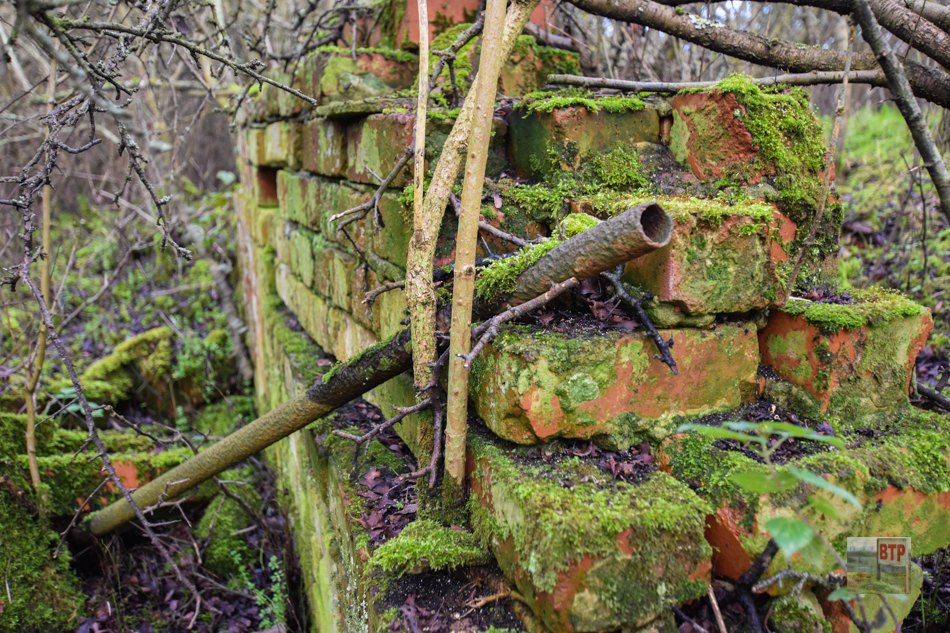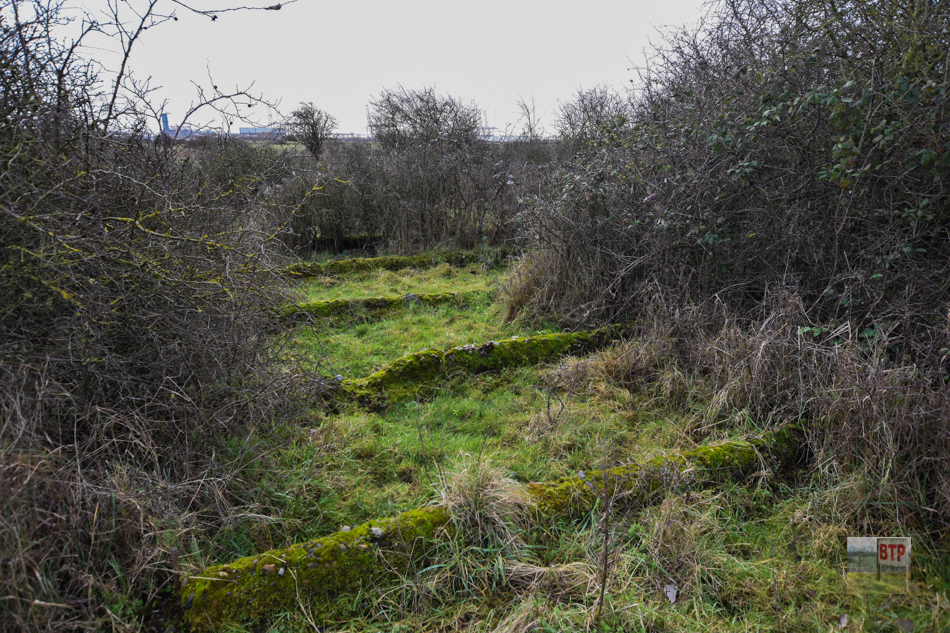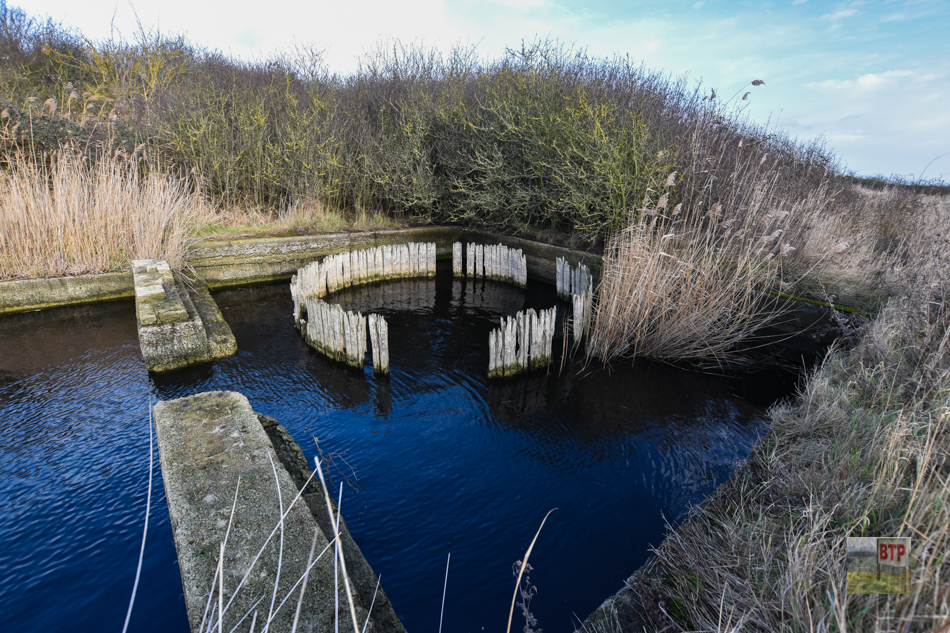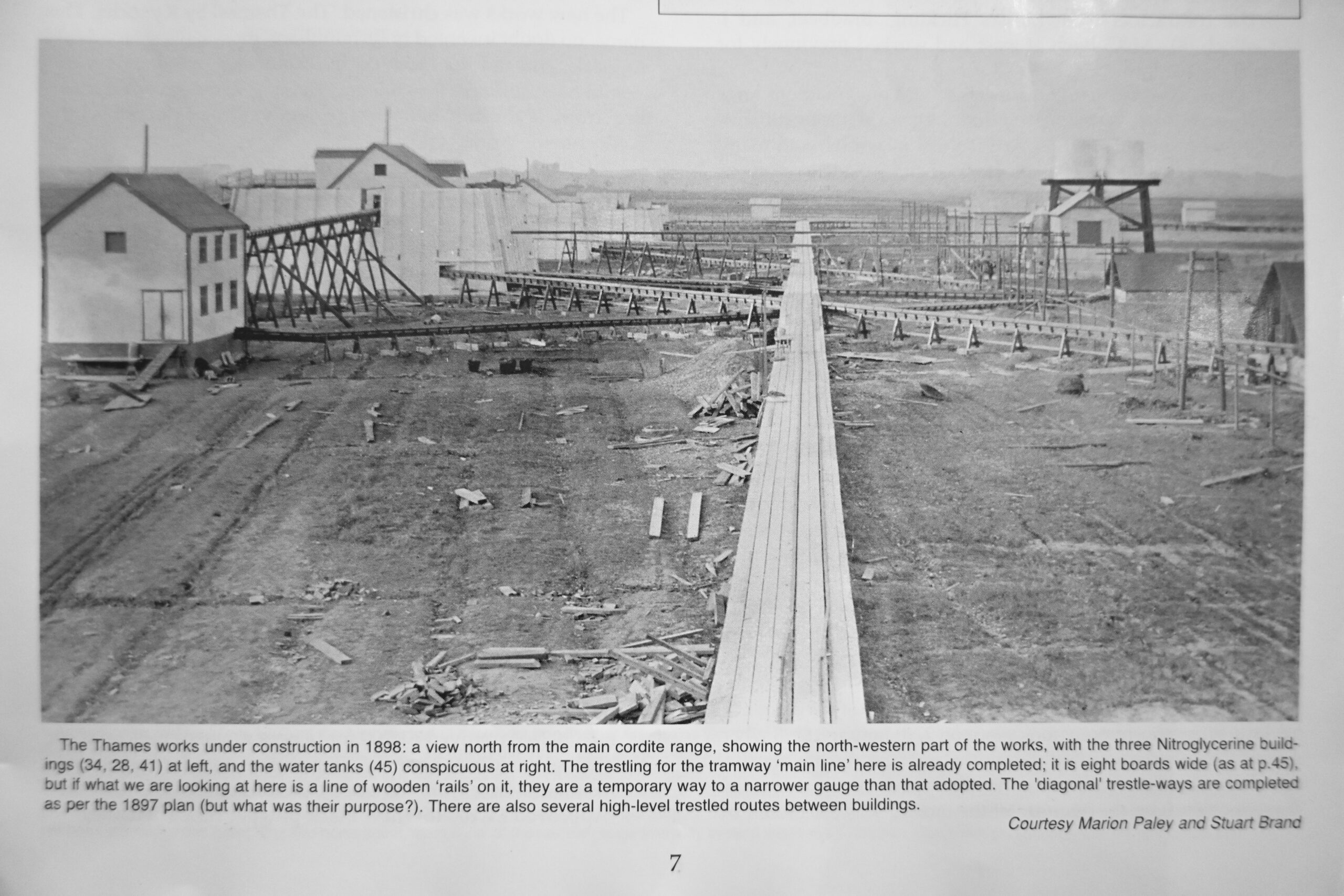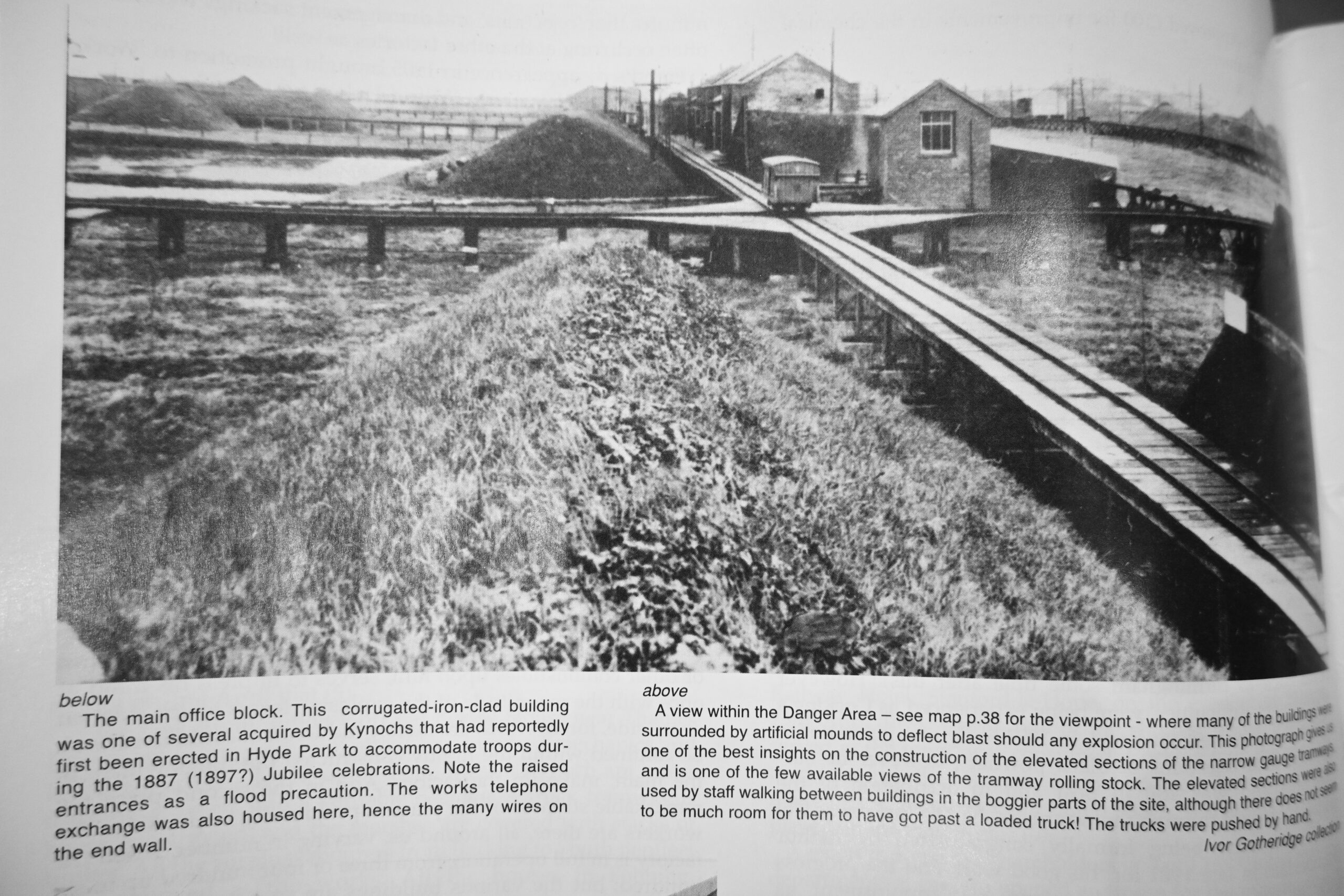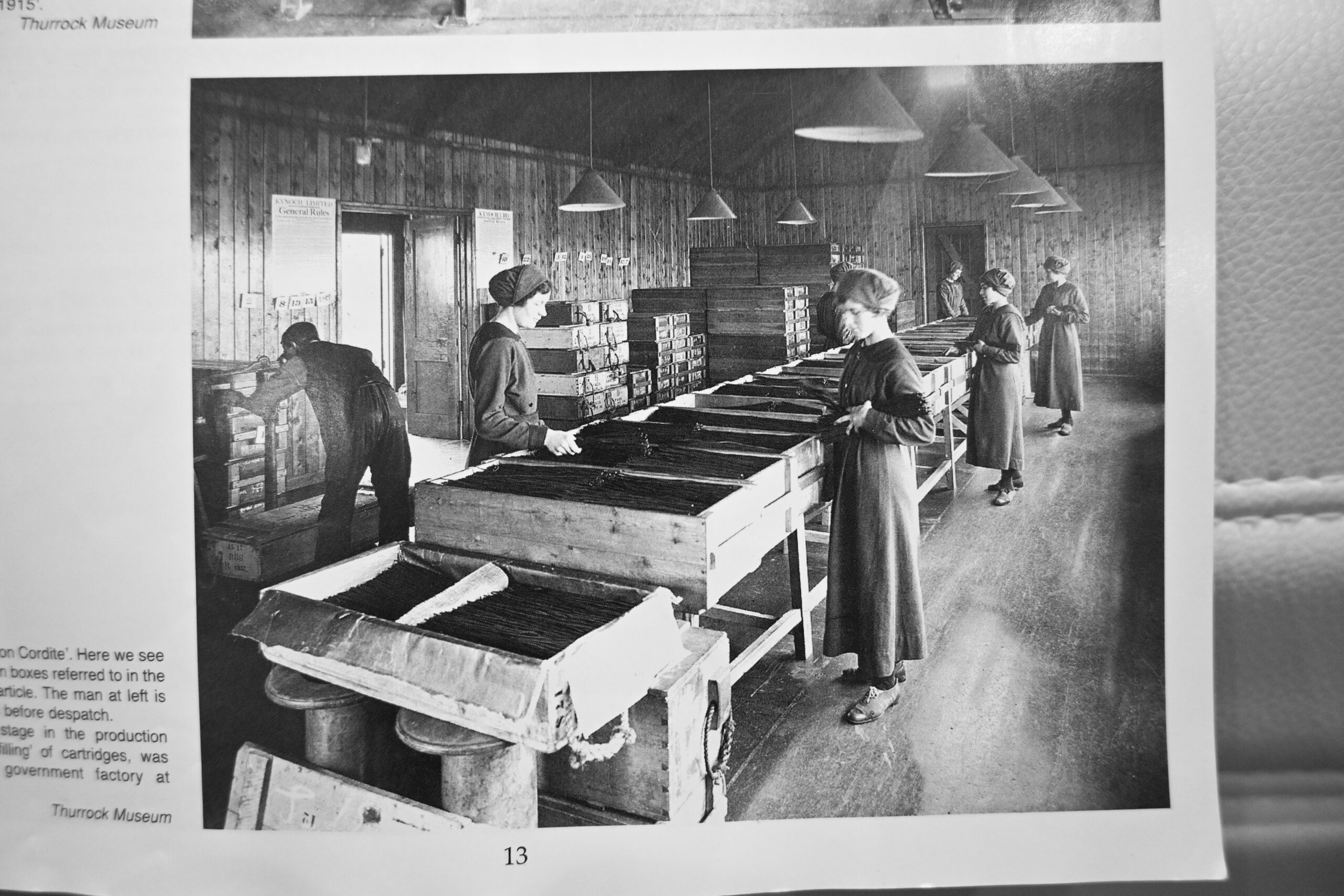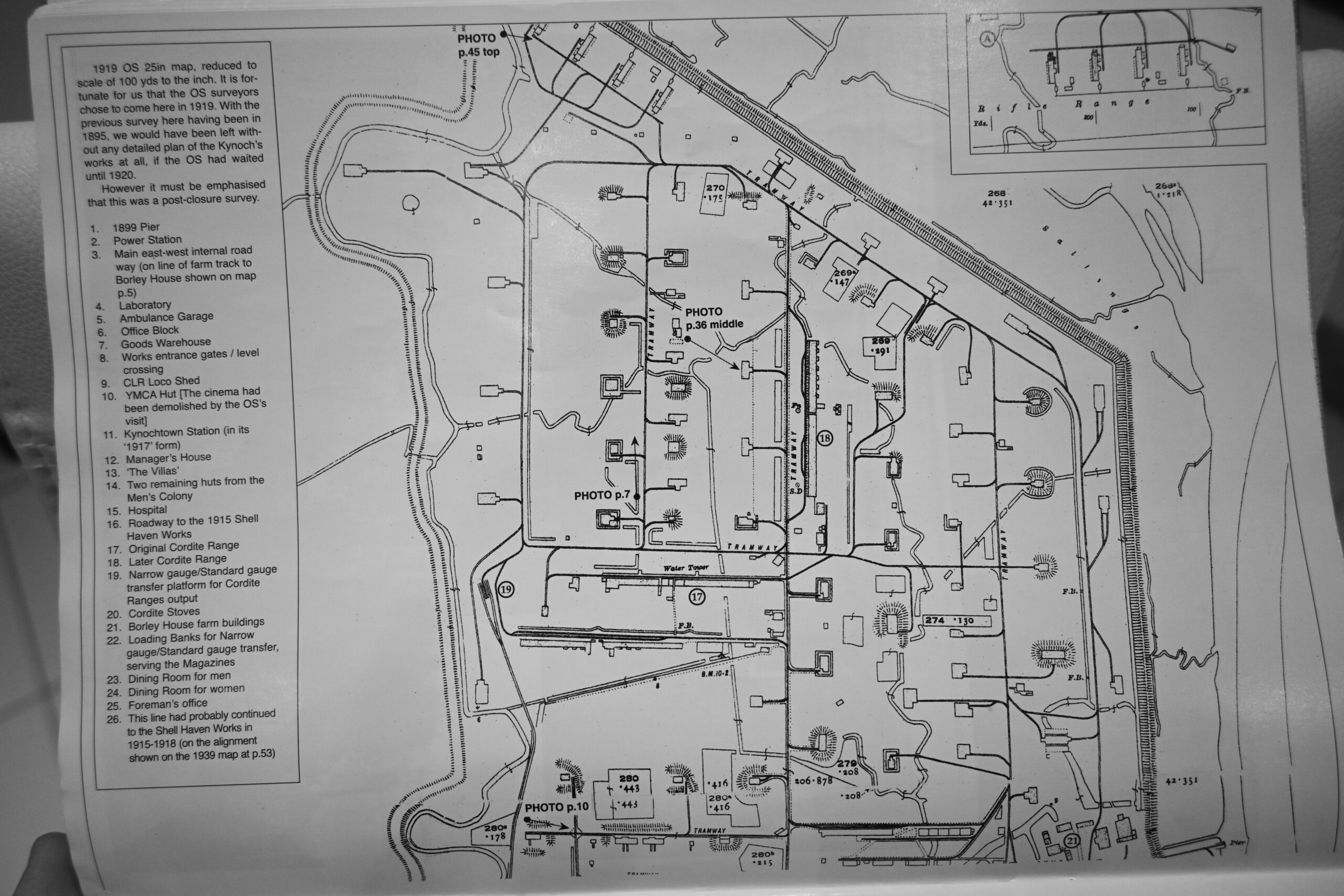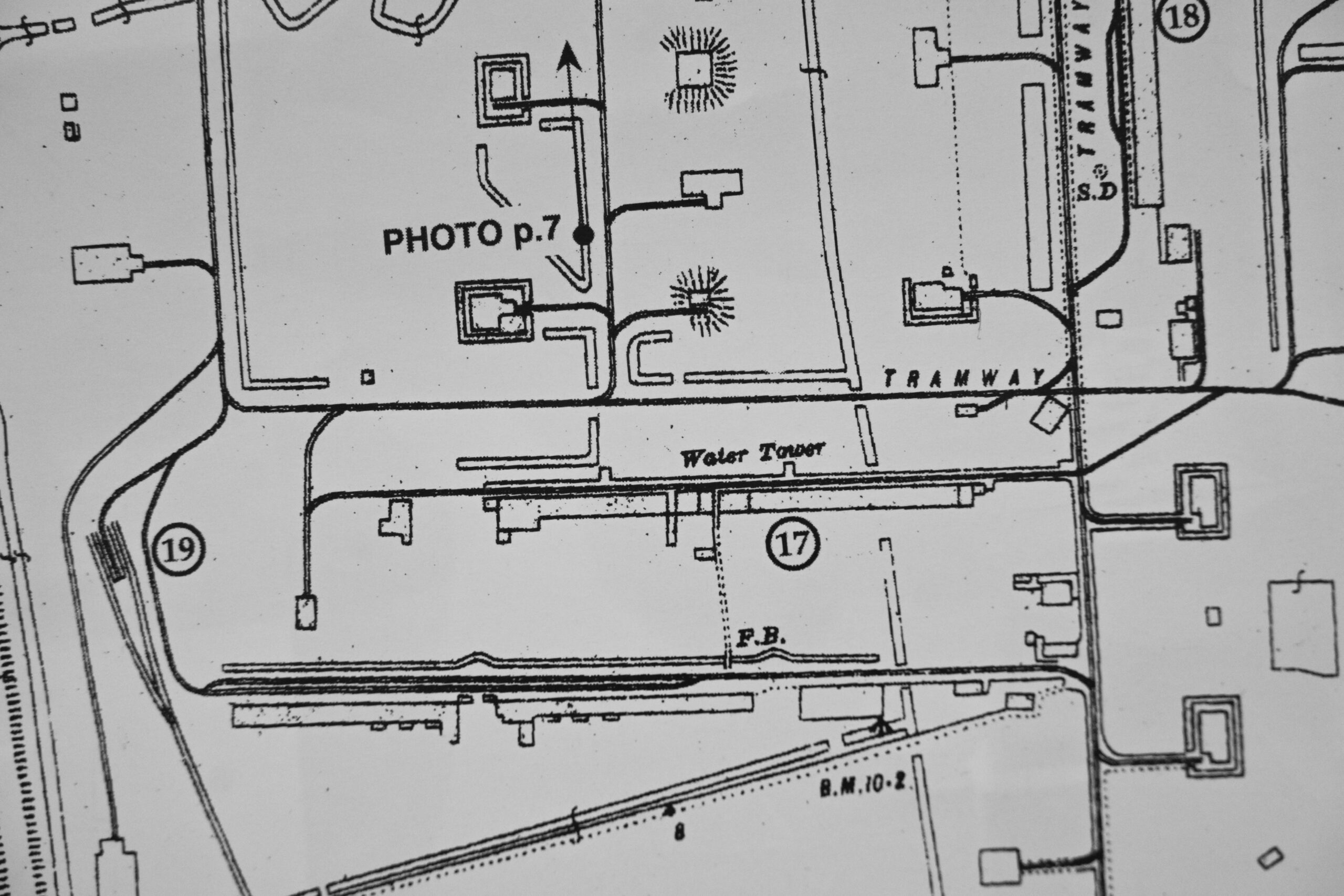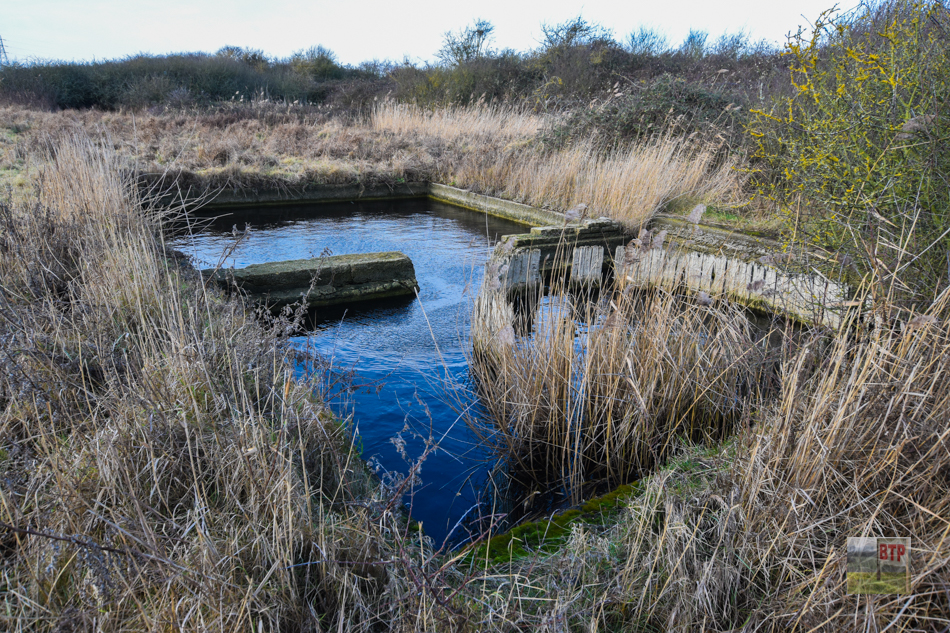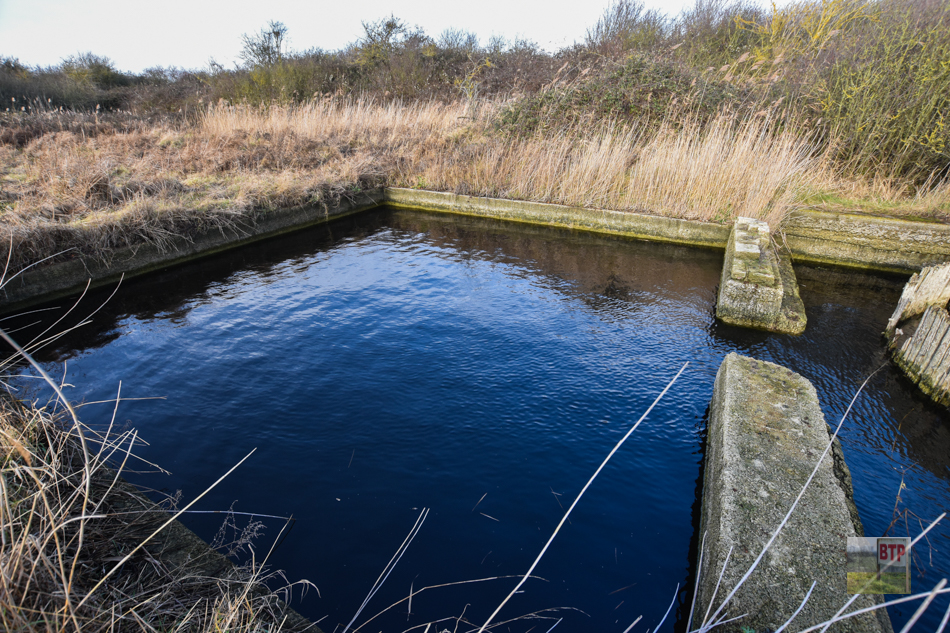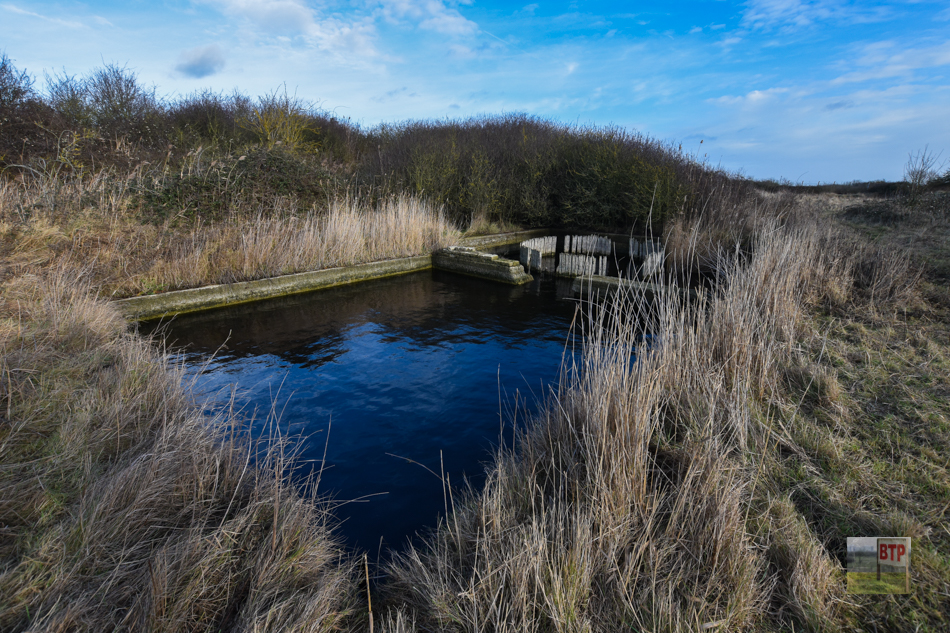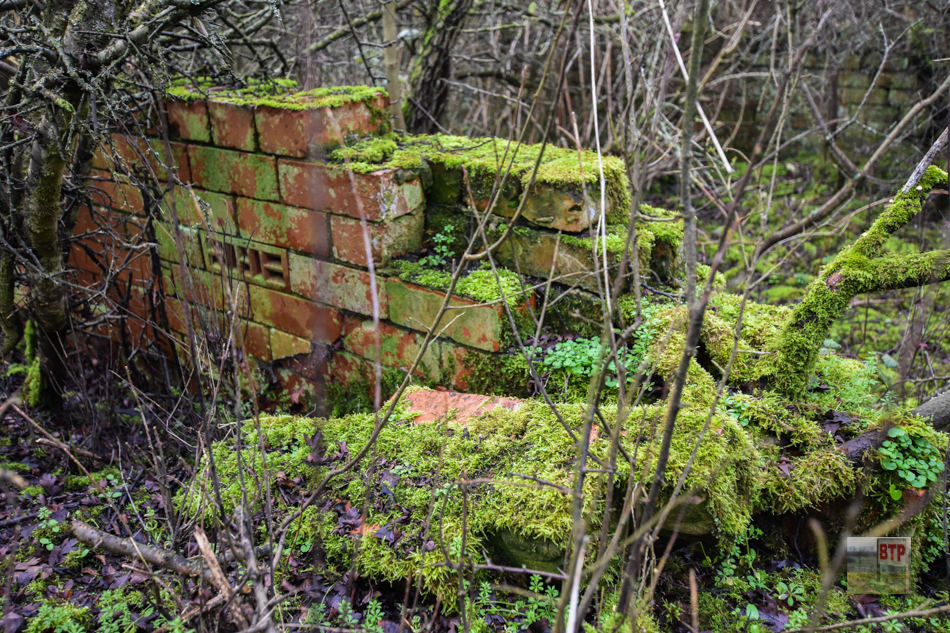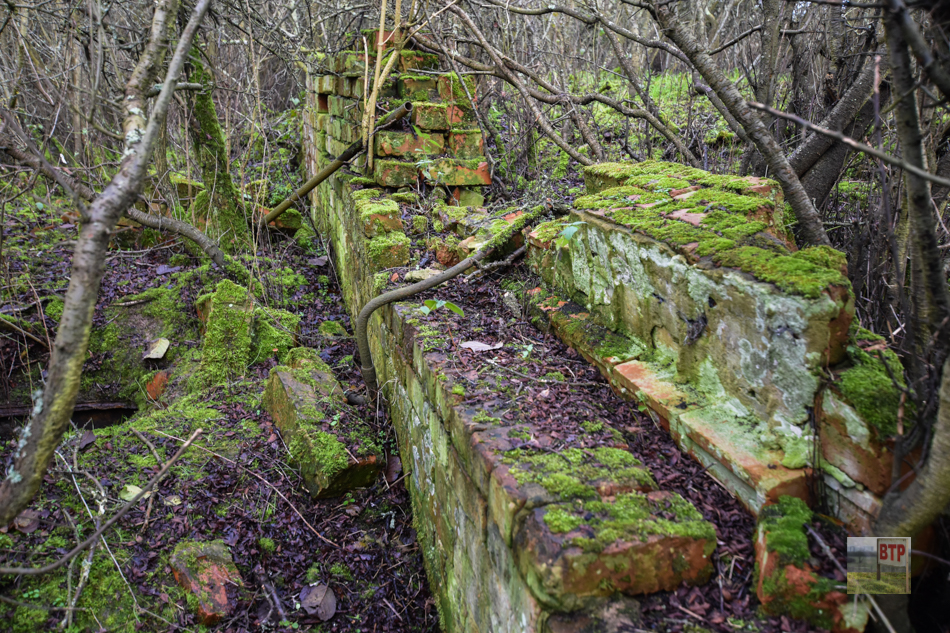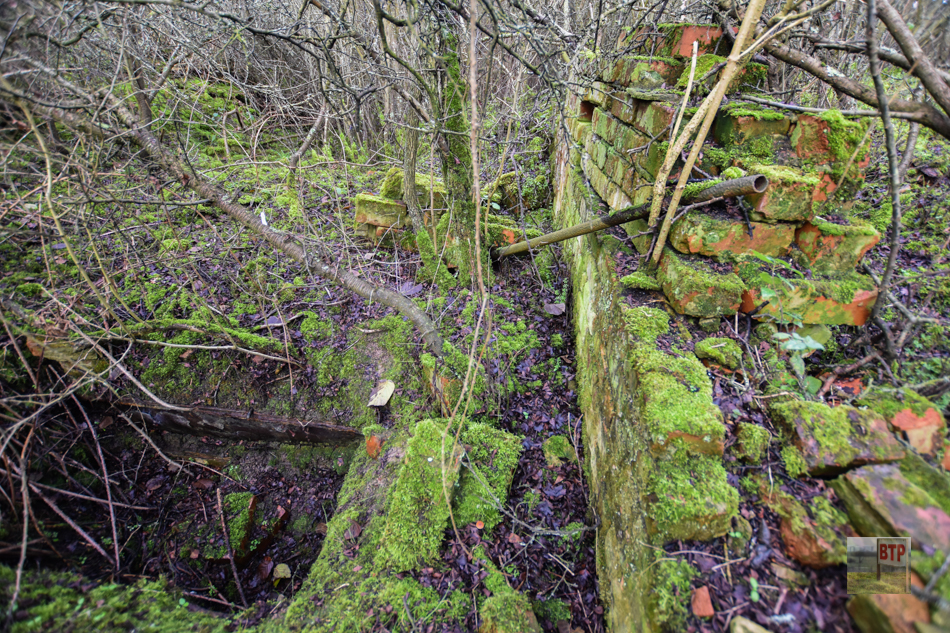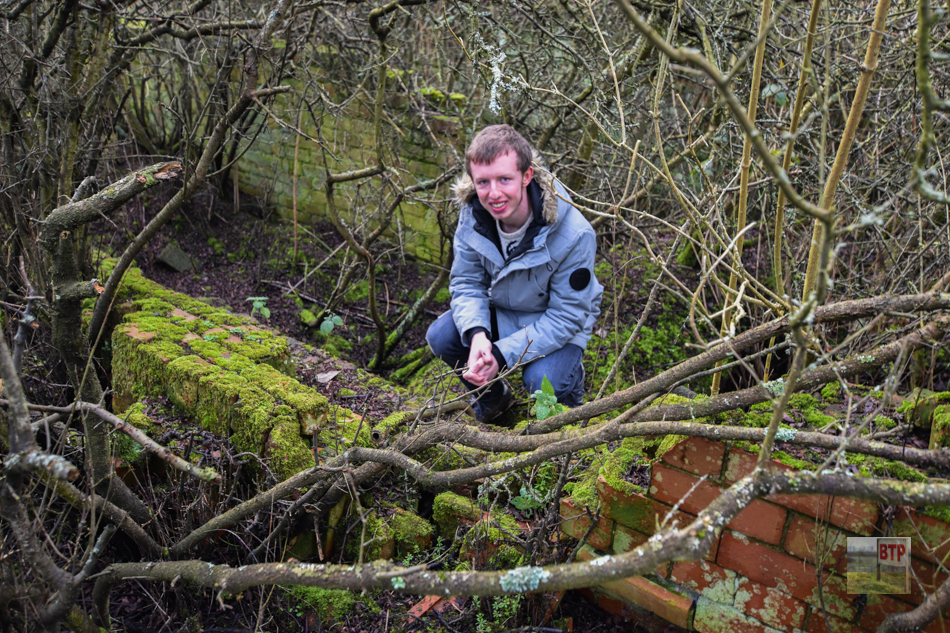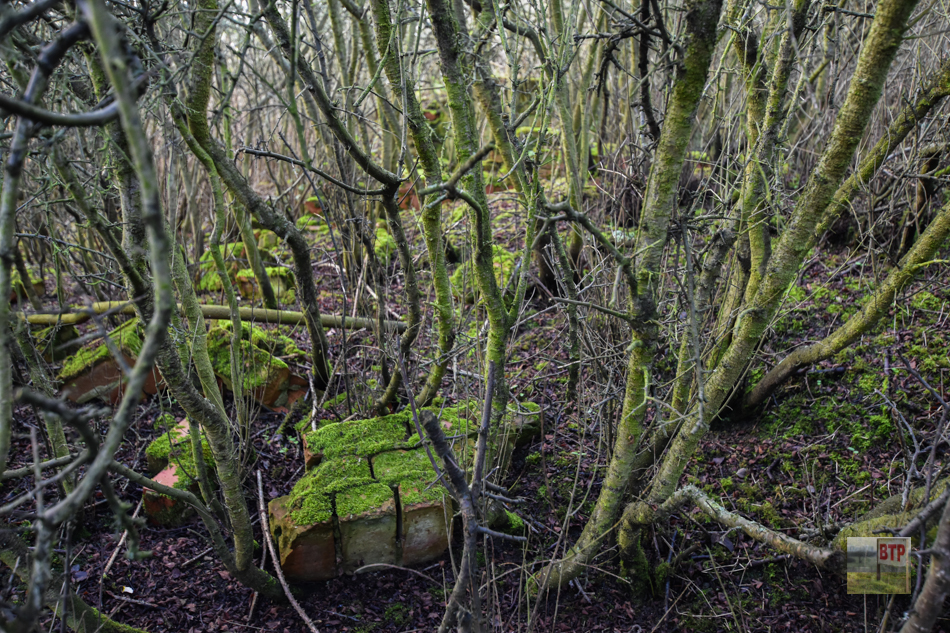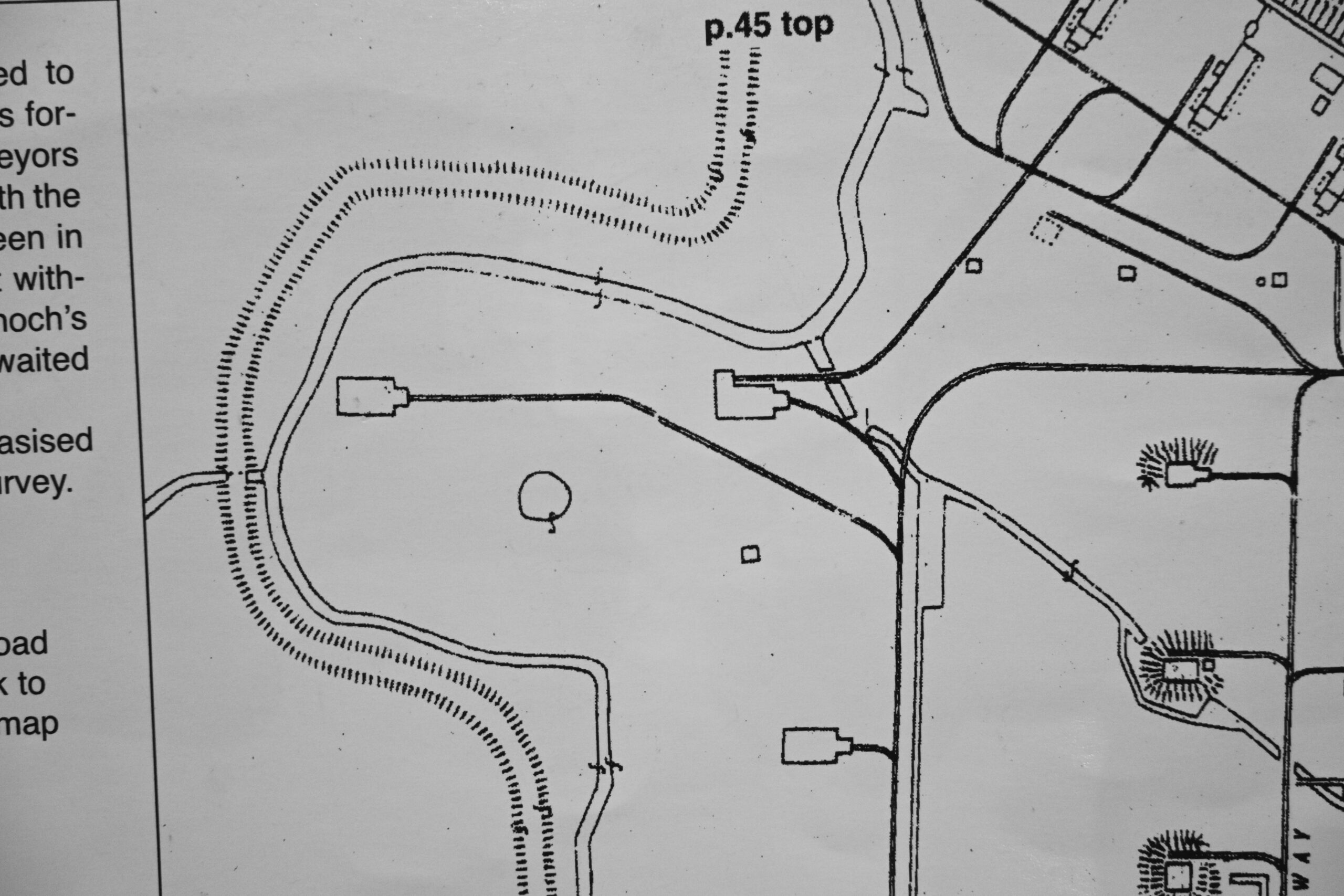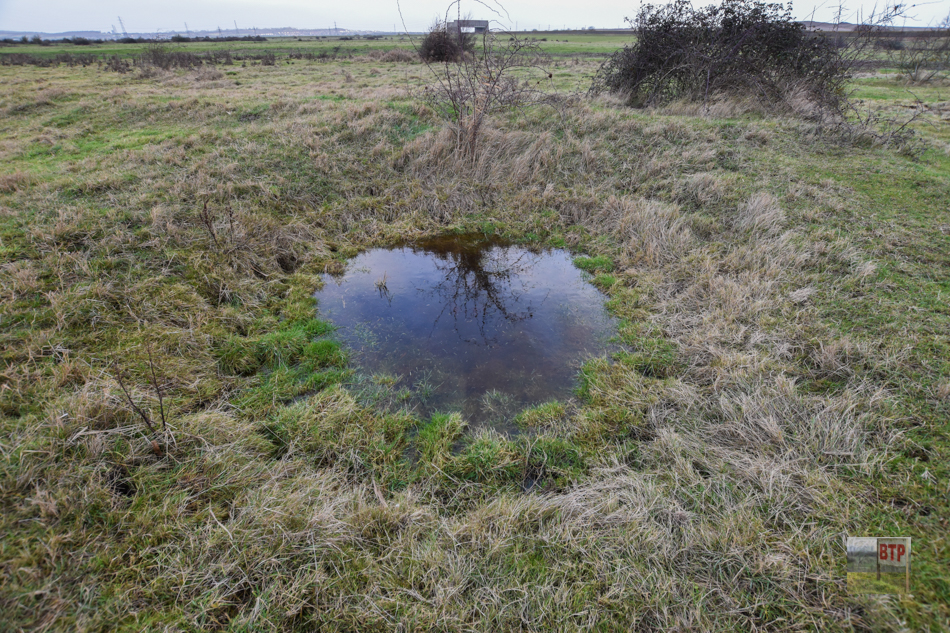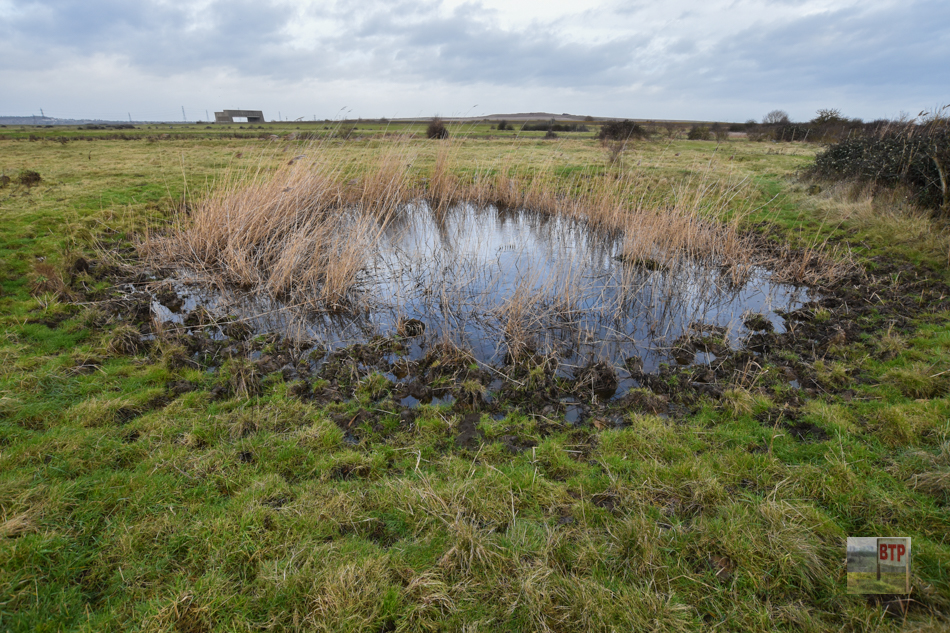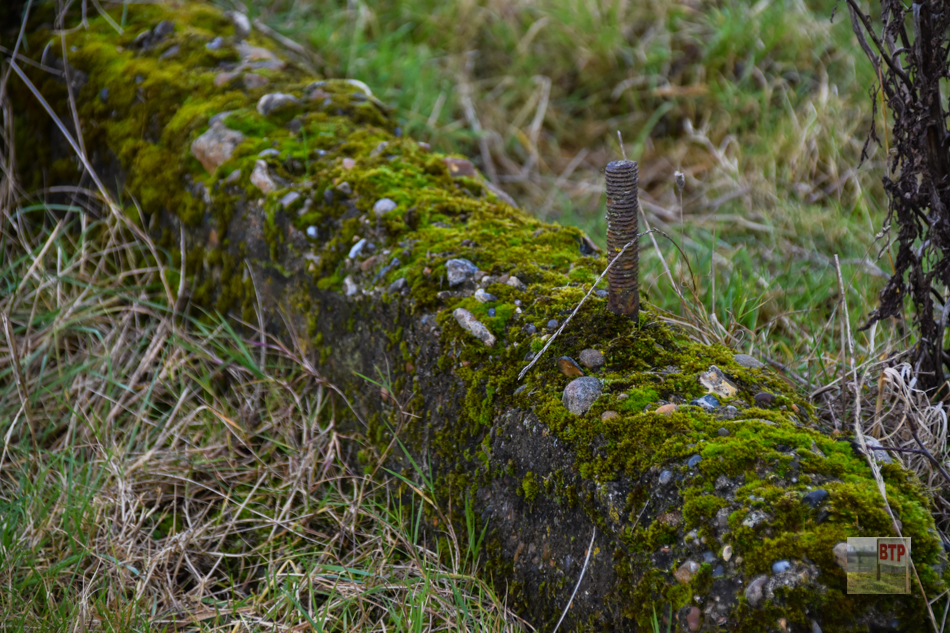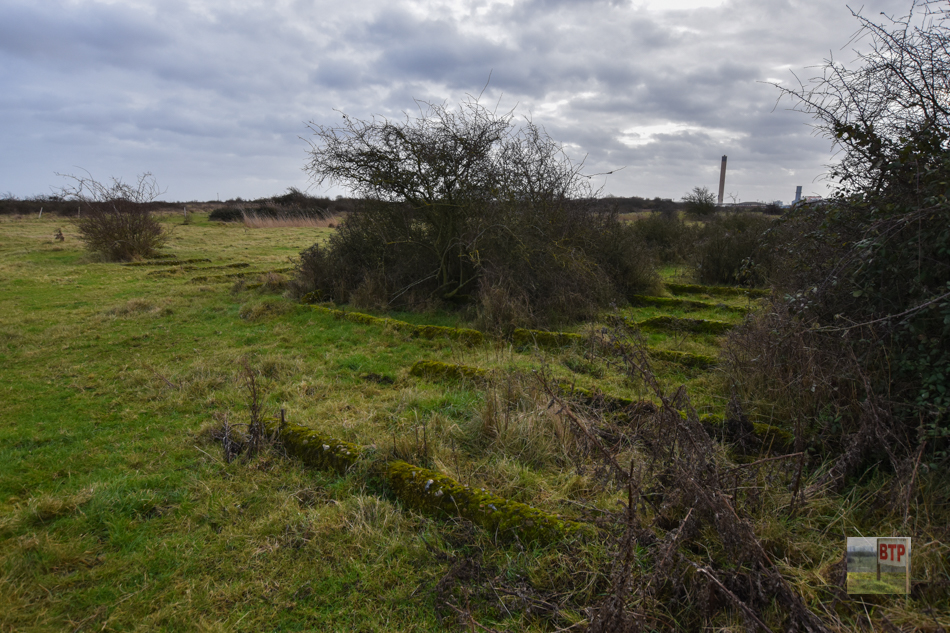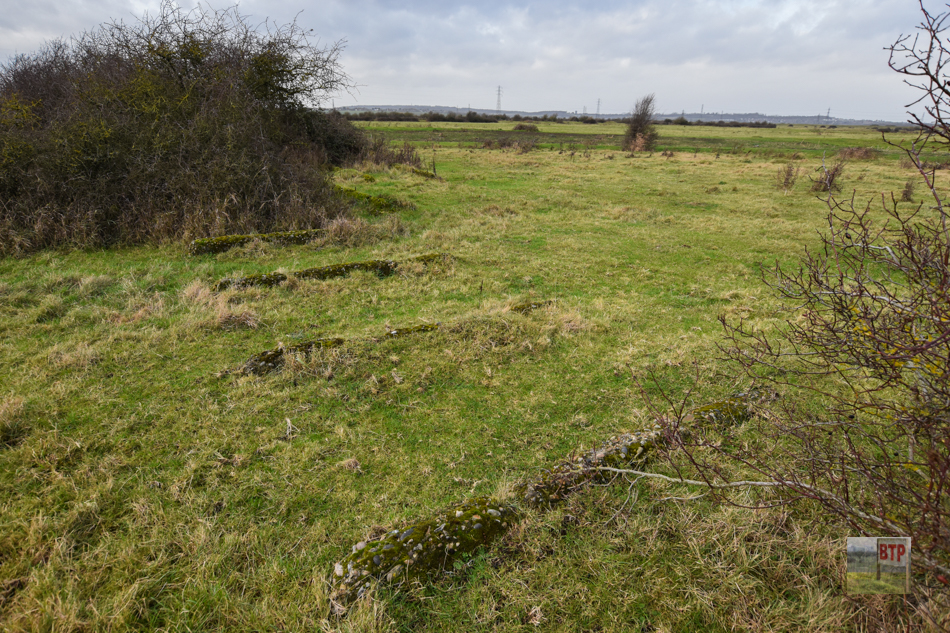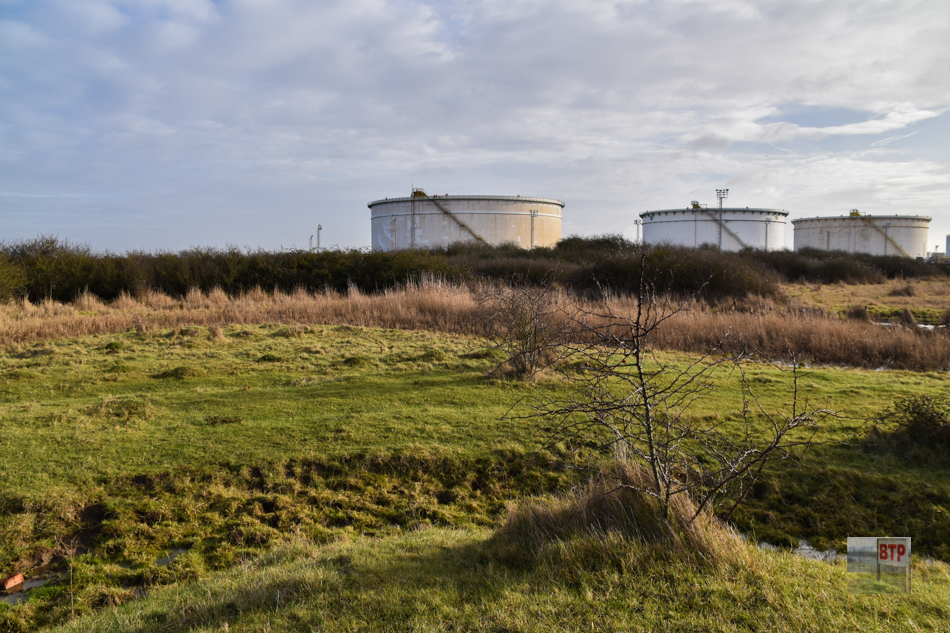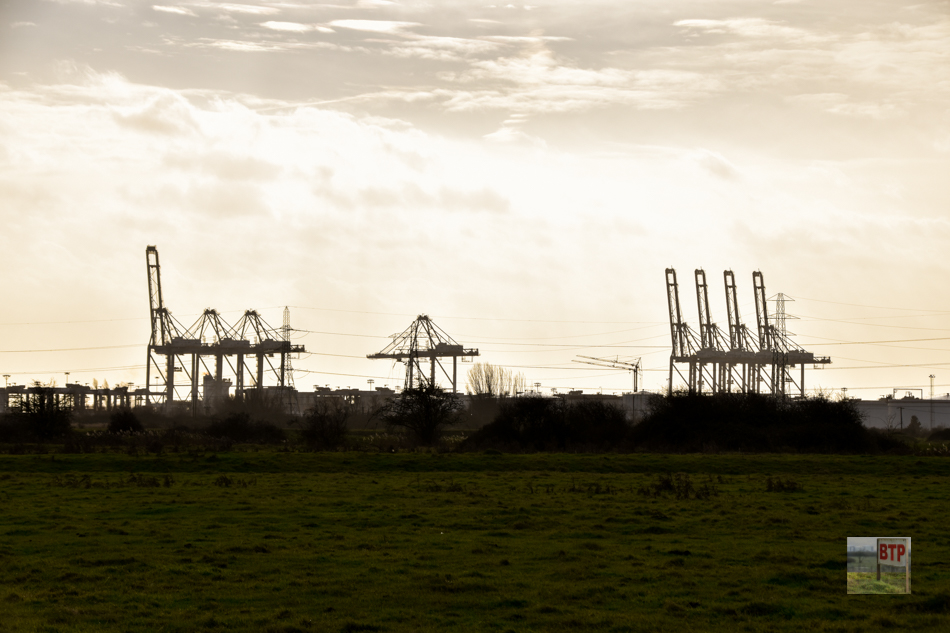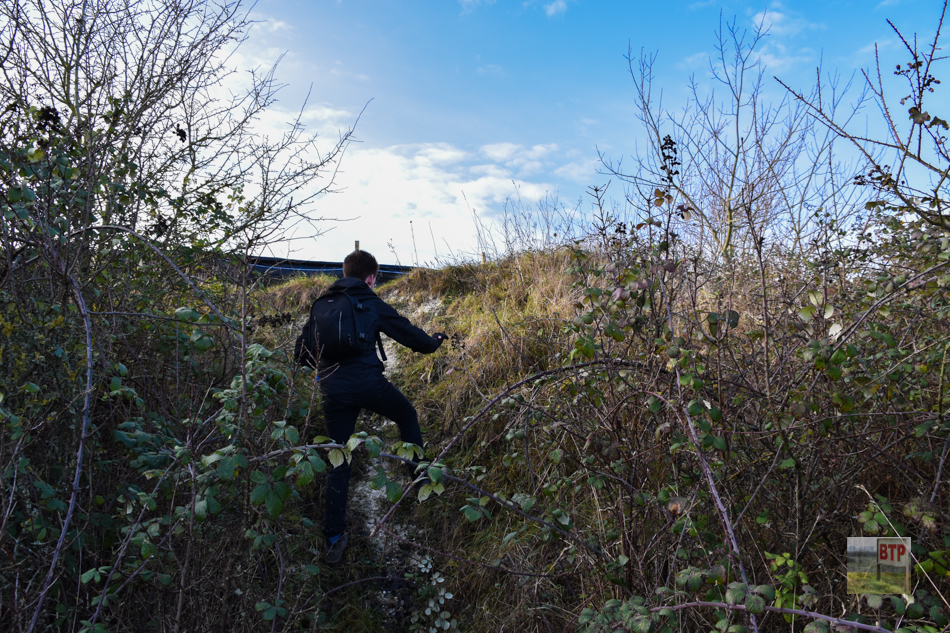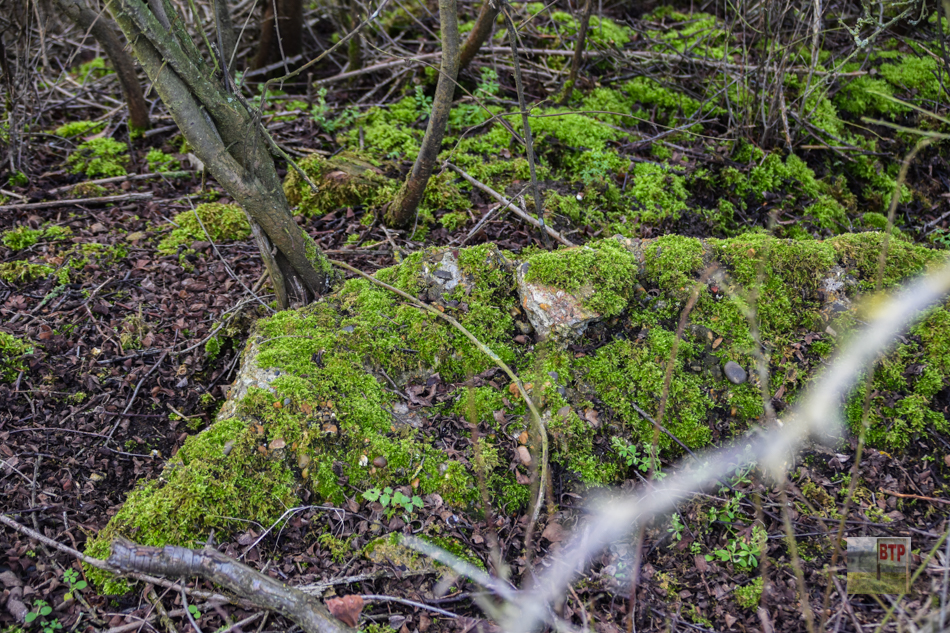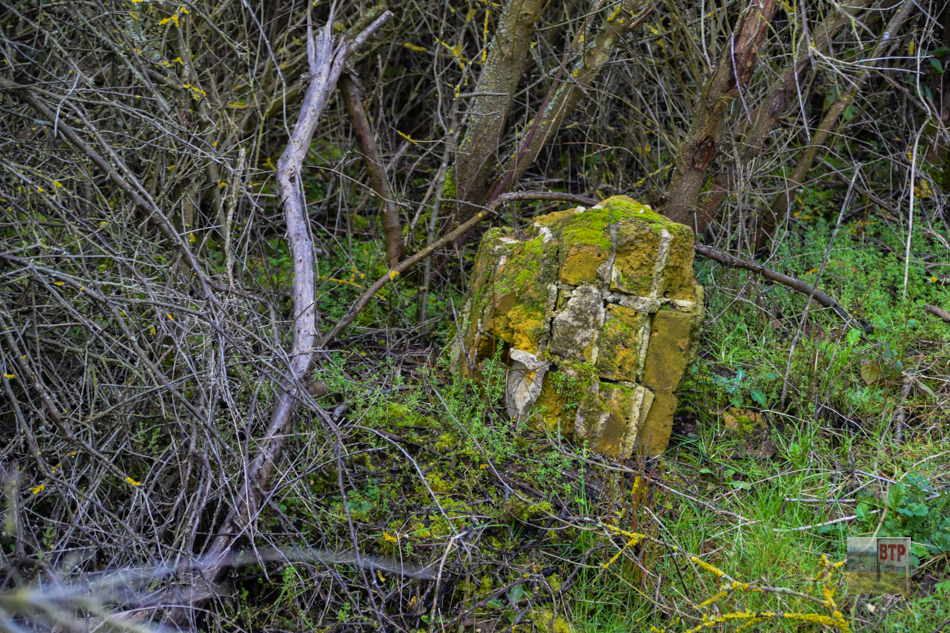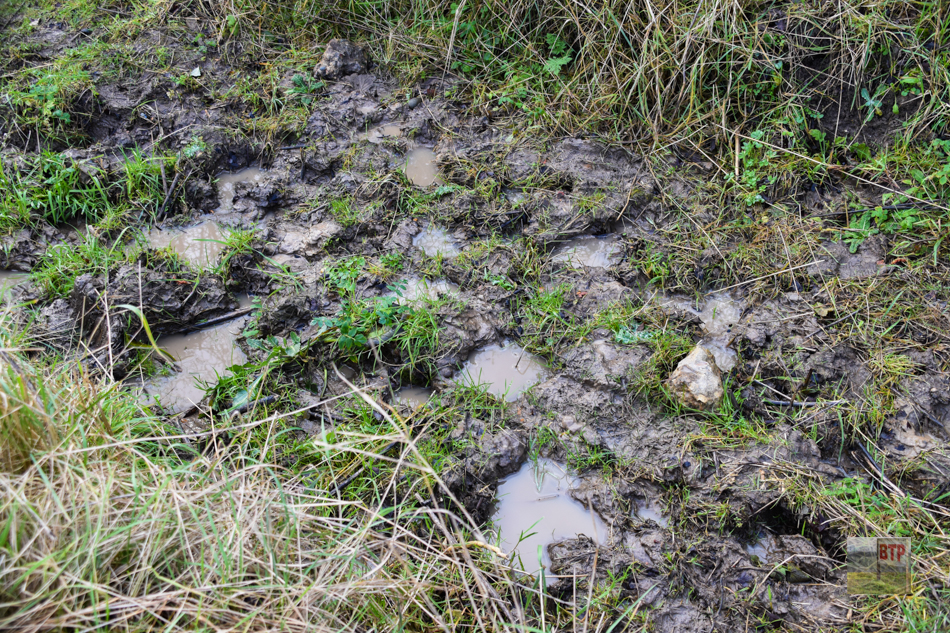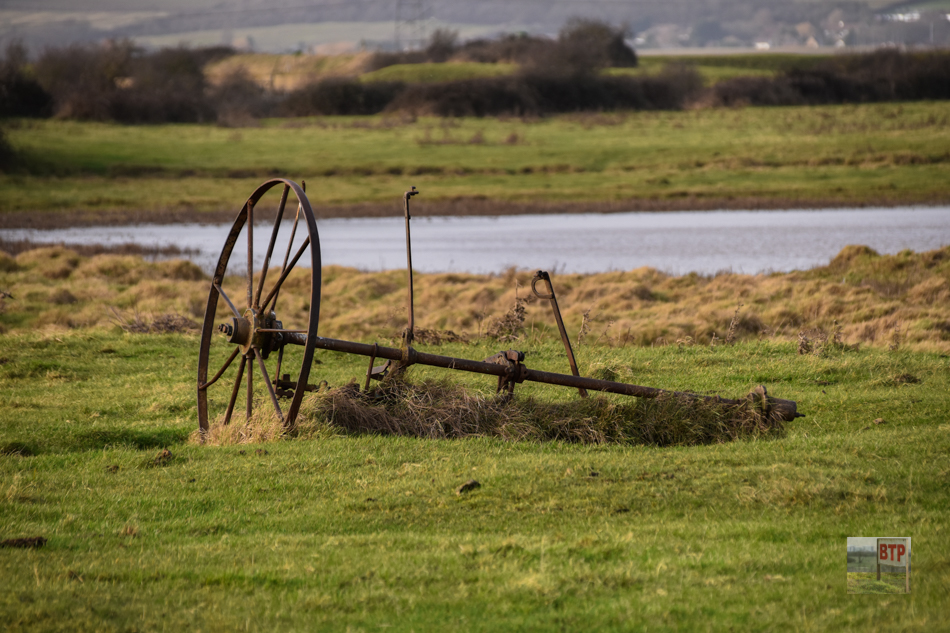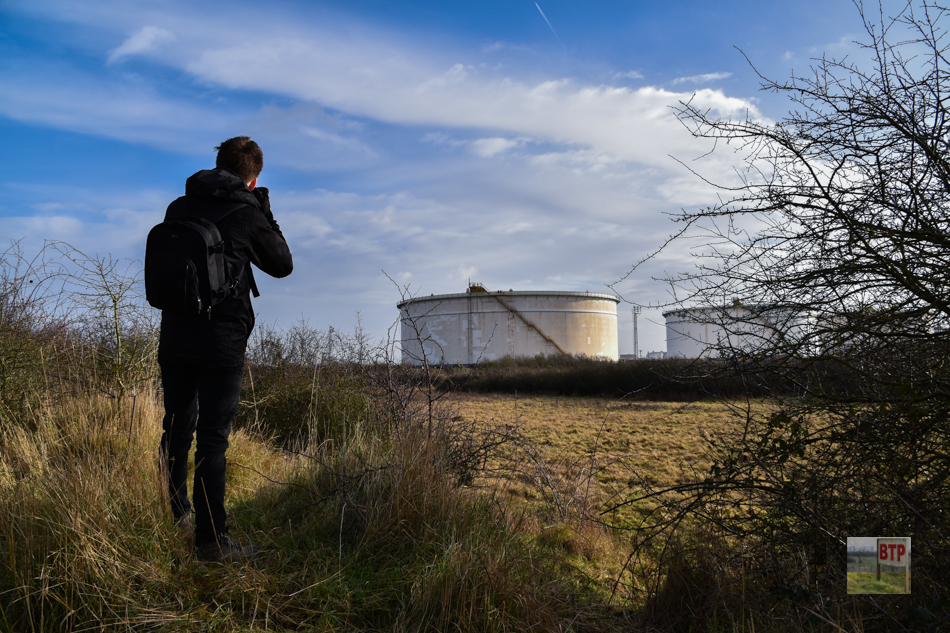We visited these structural remains in 2018 and 2020 . The first visit consisted of an initial exploration with photography to identify if these remains existed following prior research. The second visit consisted of a return to film them (video below), joined by Exploring with Em & Stu. Amazingly, we are perhaps the first to locate and identify these rare survivals of what was once a huge factory spanning the Coryton area, widely believed to have gone without trace. There’s little detail anywhere about what, if anything, remains of the site today, although by looking at old maps from Peter Kay’s excellent The Corringham Light Railway: A New History book which includes the history of the factory, we managed to narrow down the locations of potential remains to a few areas. We aimed for areas of lower land just north of the Coryton oil refinery site. Much of the land here has been subsequently raised following landfill, so we were limited to a ditch between this and the refinery, and farmland north-west. Thankfully, our suspicions were confimed…
After dodging the boggy marshes and finding a suitable route through the bushes, we came across some old bricks and rubble, covered in moss. This could have been from either the current refinery (which was previously bigger) or potentially the explosives factory. We also came across a some sort of concrete-lined water pool. Satisfied with this, we started to head onto our next site, before Liam spotted something in the bushes. What initially just looked like more bricks, turned out to be the foundations of a small building, perhaps this was the jackpot? Inside the ruins were lower ditches, lined with metal, which also had pipes inside.
Like the factories at Wat Tyler country park, and further away at Cliffe in Kent, Coryton was home to an explosives factory in the turn of the 20th Century. Kynochtown was the name given to the village for employees. The factory was built by the well-known ammunition firm ‘Kynoch’ in 1895 and it opened two years later. It produced generally speaking every element of the munition production line; from cotton wool-like exploding guncotton, to spaghetti-like cordite placed inside bullet cartages, to gunpowder and the cartridges themselves. Guncotton is chemically known as nitrocellulose and exploded on impact. The explosives made at Kynochs’ factory were placed inside .303 bullet cartridges of the Lee-Enfield rifles in service at the time amongst other less common civilian calibres. Alongside Kynoch’s main factory in Birmingham, they produced a large portion of the standard-issue ammunition of World War One. The factory would’ve served through the First World War but closed a year after it came to an end; in 1919. Women dominantly worked on the site and those touching TNT powder mixing explosives by hand. This could cause skin rashes such as hives, and discolouration of the hair and skin. Their skin became yellow as did that of their children; ‘canary babies’ as they were called. This chemical change in skin colour would wear off eventually.
Incredible photographs of the site from Peter Kay’s book The CLR: A New History, and a 1919 OS map which helped to locate the rare remains.
The Cory Brothers where coal merchants who used the site for storage after Kynochs left, and they accordingly named the village Coryton. However Mobil was an oil-refining company who took over the site in 1950 after various industrial use. A refinery was built in 1953 and this expanded into what Coryton refinery is seen as today in the 1970s. As a result Coryton village was demolished and the ground used for the refinery at this time, destroying the elegant town situated around the Fleet lake with the promise of paying to relocate residents who were almost exclusively workers on the site.
Below are photographs we have taken of the illusive remains of the factory which we personally located in the first known case of their rediscovery. We sincerely hope these remains are appreciated for their heritage value and survive into the future in the face of the developing ex-refinery site south.
Water Tower Foundations
In the low ditch between Coryton refinery and empty landfill north, we found the foundations of a water tower for the factory at the original ground level. This incredible find consists of a concrete tank with a wooden planked circular structure; perhaps the base of a water tower. This is one of the most visually impressive remains, and its age is confirmed clearly by the 1919 mapping.
Ruined Building with Blast Mound
Amongst the thick bushes in the ditch near the water tower foundation, we found the clear remains of a rectangular brick building missing its roof, surrounded by an overgrown blast mound. Whilst the pictures struggle to do it justice, it is from this evidence we can thankfully say that a building from the factory does indeed survive. This is not as obvious on old mapping, and perhaps is not covered by the 1919 mapping, but its blast-mound layout confirms its association with the factory.
Walkway Foundations & Pond
Here we found concrete ridges with metal pins upon which the wooden walkways around the site would’ve stood to avoid people sparking explosives on stones on the ground. The walkway ran under the grass east, and at its west end formed a right angle where a building would have presumably stood. This appears on the 1919 mapping as pictured, as does a large surviving pond. The smaller less-flooded pond does not seem to appear on the 1919 map so is probably a later unrelated feature, or a bomb crater.

